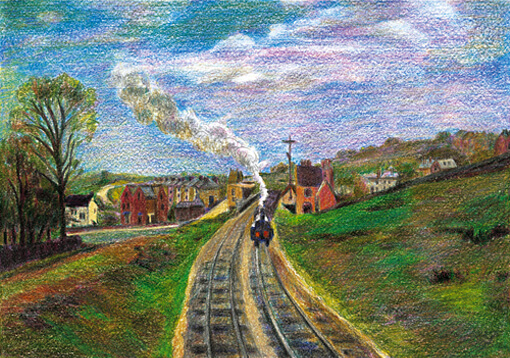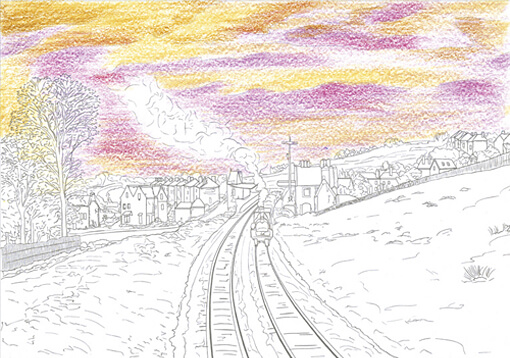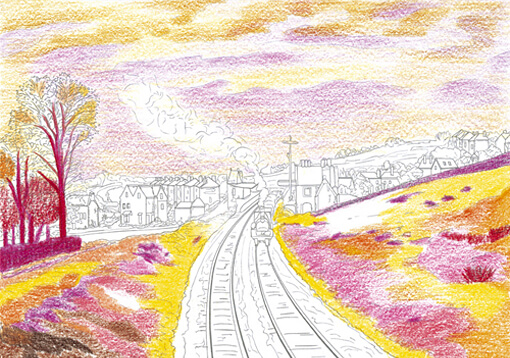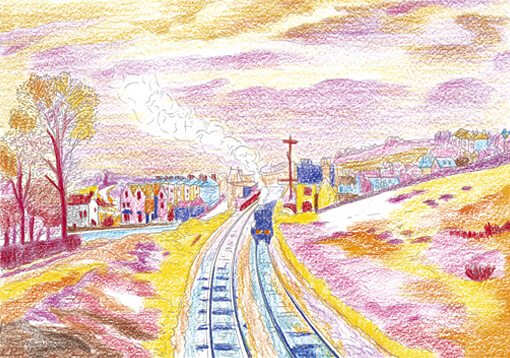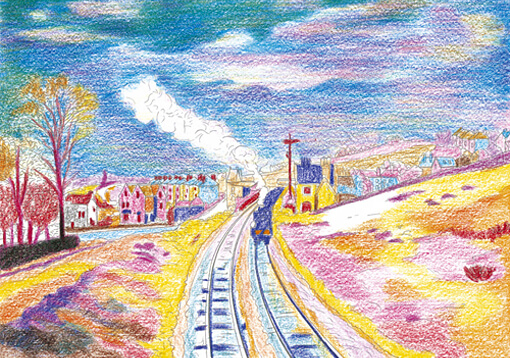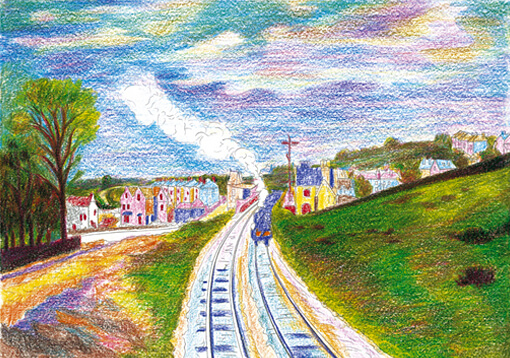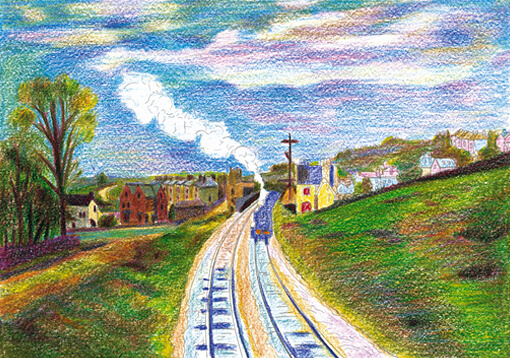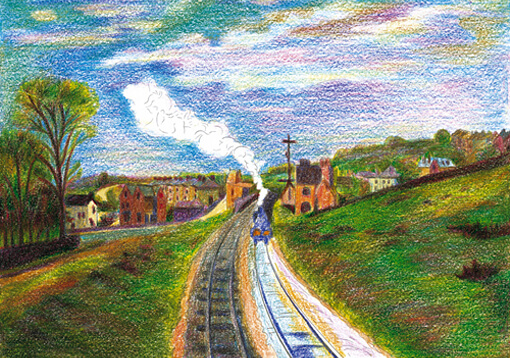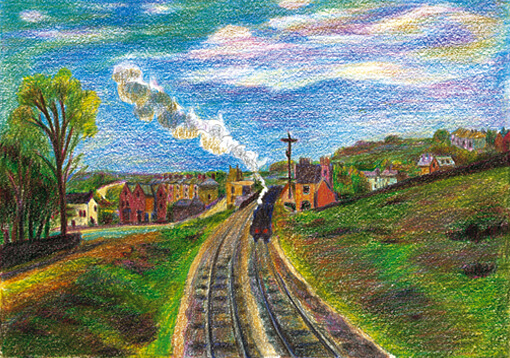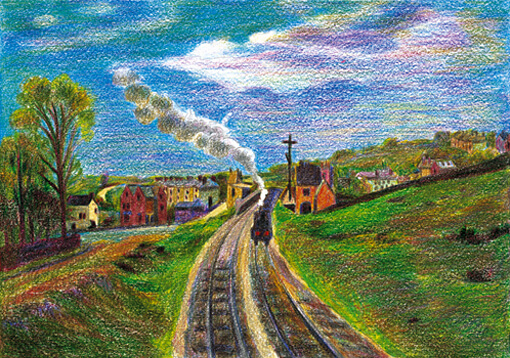COUPY PENCIL: The Colored Plastic Pencil Lesson: How to Color
COUPY PENCIL: Key features
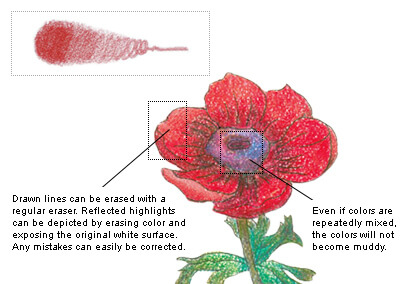
- ◆As easy-to-use as colored pencils, but with the coloring power of crayons. The whole pencil is used to color, unlike a regular pencil with only a central colored lead.
- ◆By changing the angle of the versatile COUPY PENCIL, holding it straight up or laying it flat, thick and thin lines can be freely drawn.
- ◆Drawn lines can be erased with a regular eraser. Reflected highlights can be depicted by erasing color and exposing the original white surface. Any mistakes can easily be corrected.
- ◆The secret of coloring with COUPY PENCIL is to hold it lightly with no excess force, and color by gently stroking the picture surface. Apply repeated layers to deepen the color, rather than applying color all at once.
How to Color “Lordship Lane Station, Dulwich”
Lesson: How to Color
- COUPY PENCIL
- Colored Pencils
- Watercolor Pencils
- Watercolors
